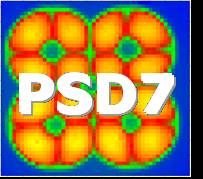Speaker
Dr
Sorina Lazanu
(National Institute for Materials Physics, Romania)
Description
Semiconductor detectors are widely used in modern high energy
physics experiments. They are elements of the high resolution vertex
and tracking system, as well as of calorimeters
The bulk displacement damage in the detector, consequence of
irradiation, produces effects at the device level: increases the
leakage current, decreasing the satisfactory Signal/Noise ratio,
produces carrier trapping, modifying the build-up space charge,
changing the required operating voltage. These effects limit the
utilisation of the detector as a position sensitive device. In
silicon p-n junction detectors, after large irradiation fluences,
the negative space charge dominates and the required operating
voltage increases. The safe operating value of the depletion voltage
limits the detector lifetime and thus the lifetime of detector
systems. So, the prediction of time behaviour of detectors in
hostile radiation environments, as those expected in the next
generation of colliders, represents a very useful tool.
In some recent papers [1,2,3], the authors argued that the main
source of discrepancies between data and previous models for
degradation of device characteristics (leakage current and effective
carrier concentration), especially after hadron irradiation, could
be explained considering the contributions to these effects of
the “usual” vacancy and the existence of a pseudo vacancy – the
SiFFCD defect (fourfold coordinated vacancy defect).
In this contribution we predict the time degradation of silicon
detectors – leakage current and concentration of effective carriers,
in the radiation environments expected in the LHC machine upgrade in
luminosity and energy as SLHC and VLHC respectively, for detectors
fabricated using different silicon growth technologies. If these
hypotheses are correct, thus, in conditions of continuous long time
irradiation, as e.g. LHC and its upgrades, the contribution of
primary defects will represent a major problem and must be
considered. Also, this study permits to predict which materials are
more adequate to obtain harder radiation devices, but experimental
confirmations are needed.
References
[1] S. Lazanu, I. Lazanu, hep-ph/0410172
[2] I. Lazanu, S. Lazanu, Silicon detectors: from radiation hard
devices operating beyond LHC conditions, to characterisation of
primary fourfold coordinated vacancy defect; accepted to Rom. Rep.
Phys.
[3] I. Lazanu, S. Lazanu, The role of primary point defects in
silicon detector degradation due to irradiation, submitted to NIM B
Primary author
Dr
Sorina Lazanu
(National Institute for Materials Physics, Romania)

